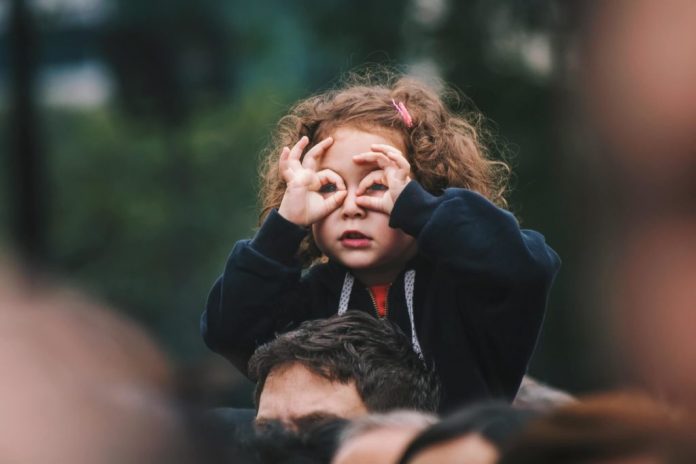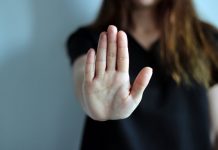This article has been written by Neelam Prusty, pursuing a Diploma in Intellectual Property, Media and Entertainment Laws from LawSikho.
Table of Contents
Introduction
After the invention of Google, our lives have become easier. Google is one of the most favorite search engines which has an amazing search algorithm. Everyone has become dependent on Google for every kind of information. There are probably any children or adults who have never used Google to find some information or images.
During the era of technological development, everyone is concerned about their privacy because the data is stored online. Whenever we store something on our phone, the backup is saved with Google. But have you ever been concerned about your copyrighted material? Have you ever wondered who owns the copyright on your original images and documents that you upload with Google? It may be your own images or images clicked by you.
To know your rights and solutions to your concern as a layman, let’s discuss whether the images uploaded with Google are safe with you or your rights are secretly in danger.
Ownership under Copyright Act
The Japanese fictional series “Doraemon” is very famous among children. Do you know who owns the copyright of that story?? It is Fujiko F. Fujio Pro, a production house by Fujiko F. Fujio who wrote and illustrated the series.
The first owner of a copyrighted work is the author or the original creator of the work as mentioned under Section 17 of the Copyright Act, 1957. The creator can be anyone who has created any kind of original artistic or literary works in the form of poems, plays, movie scripts, stories, musical compositions, paintings, photographs, etc.
But under certain circumstances, the original owner of the work is not called the author of the work and has no rights over his/her original work. These exceptional circumstances arise when the original creator has created something in the course of employment or has been hired to create the artistic or literary work or the owner has already sold or assigned the work to someone else.
In case when the original creator has created an artistic or literary work in the course of his or her employment, the employer will own the copyright after successful payment of certain consideration.
For example, Brendan Greene is a designer at Bluehole who is responsible for designing new games for children of diverse age groups. He designed a game called “PUBG”. Here the owner of the game lies with Bluehole rather than Brendan Greene, the original creator.
Similarly, if the original creator has been hired to create an artistic or literary work or has already sold or assigned the work to someone else, the purchaser will become the sole owner of the work after the payment of the consideration.
For example, Joseph Radhik is a famous photographer who was hired by Anushka Sharma to click photographs in the marriage ceremony of Virat Kohli and Anushka Sharma. The ownership of the photographs clicked by Joseph Radhik lies with Anushka Sharma rather than Joseph Radhik. If Joseph Radhik would have independently clicked some photographs and sold them to Anushka Sharma. The ownership of the photographs would have also transferred to Anushka Sharma only after payment of reasonable consideration.
In the case of joint work, where two or more authors have created an artistic or literary work that is interdependent on each other and has been combined by the authors to complete the work, both the authors own the copyright over the work.
Rights of owners of copyrighted work
The Copyright Act grants some exclusive rights to the copyright owner of the original work. The owner of the copyrighted work can reproduce, distribute, translate, adapt or use his/her work under Section 14 of the Copyright Act, 1957.
The owner can create copies of his copyrighted work to sell or distribute the work for commercial benefits. The owner can also allow the use of his work in the public domain. For example, A is the writer of the book “East to West”. A can either reproduce the copies and permit the sale of the work in public or A can also allow to make a movie or play on the story and perform in the public. The owner has the complete right to create volumes of the work like the Harry Potter series.
The owner of the copyrighted work has a bunch of rights. But if someone loses his rights and ownership over his/her original work without his/her knowledge, it can affect their privacy and can affect their copyright over the work since there is a probability that the work may be copied. These concerns have essentially come to light after the evolution of the internet.
Owner of copyright of the images in Google search
In the current scenario of emerging technologies, the protection of the intellectual property of our original work has come into question. With the use of the internet, the policies relating to Intellectual Property Protection have been under the spotlight.
There are a lot of search engines like Google, Yahoo, Bing, etc. as well as social media platforms like YouTube, Facebook, Instagram, etc. with exponentially expanding users. Every platform has certain Terms and Conditions which we have to accept before we start using the platform. Google is one of the most used search engines which also has certain terms and conditions that require it to be accepted before using. The Google Terms and Services states in clear words that:
“Your content remains yours, which means that you retain any intellectual property rights that you have in your content. We need your permission if your intellectual property rights restrict our use of your content. You provide Google with that permission through this license.”
This phrase from the Google Agreement clarifies that Google does not own copyright over any of our original work shared with Google. But Google acquires the license over our copyright work after we accept the terms and conditions. Though the licensing of copyrighted work will not affect the ownership of the copyrighted work, Google can still have the right to display the work in the public domain. When someone uploads any images on a third-party website, the copyright of the image is retained with the person and not with Google. Google will have a non-exclusive, royalty-free, transferable, and sub-licensable right over the images as it acquires rights over the images after acceptance of the terms and conditions.
There is an exception that refrains the use of private images that a person can store in Google Drive. The Google Drive Terms and Services stated that “We will not use a private document for marketing or promotional campaigns”. Hence, the images stored in Google Drive are completely safe and it also doesn’t affect the copyright over the images nor Google will display the images in the public domain.
In the case of Blake A. Field v. Google, Inc., the plaintiff filed a case against Google claiming that Google has violated his exclusive rights to reproduce and distribute copies of his copyrighted work. But the court dismissed the copyright claims of the plaintiff stating that the claims were not supported by law.
In another case of Gordon Roy Parker v. Google, Inc, the plaintiff sued Google for defamation and invasion of privacy because Google had archived defamatory messages about him which were posted on a third-party website. Whenever his name is searched over Google search query, Google would display the biography of Plaintiff. The court rejected the claims of the plaintiff by stating that Google has the only intention to provide immunity.
Legal use of Google Image without permission in public domain
Since Google displays the copyrighted work of various original creators in the domain, most of the images available on Google are protected under the scope of copyright. Sometimes, the images in the public domain don’t require any permission for use but copyrighted images, one must acquire permission from the owner of the images.
There are a few exceptions by which we can use copyrighted images without permission.
-
Use after expiration of copyright
The original copyrighted work is protected for a limited period of time. The copyright over the artistic work i.e., images will last for 60 years from the death of the photographer or owner under Section 22 of the Copyright Act, 1957. If a person is using the images after 60 years of the death of the owner, it is legal to use and will not infringe the copyright over the image.
-
Fair use
While explaining something or preparing a report on something, if someone uses a copyrighted image, it is not an infringement of copyright rather fair use under Section 107 of the US Copyright Act, 1976. Fair use is said when any copyrighted work or image is not used by someone independently rather the use of the image is required at that moment. For example, A is a teacher who teaches environmental science. While teaching, she explained a circumstance with an image clicked by Aishwarya Sridhar. Even though she has not asked the photographer for permission, she has not infringed the copyright since the action comes under the doctrine of Fair use.
The concept of Fair Use has a very limited scope and reasonable uses so that the action does not interfere with the enjoyment of the owner’s economic and moral rights as under the copyright law. Section 107 of the US Copyright Act permits the fair use of images and reproduction of the same. Google Legal Support explains the essentials of fair use which requires it to be fulfilled for determining that the image was used for fair use and doesn’t infringe the copyright.
In the famous case of The Chancellor, Masters & Scholars of the University of Oxford & Ors. v. Rameshwari Photocopy Services & Ors., commonly known as DU Photocopying Case, the Delhi High Court held that the reproduction of copyrighted material for the purpose of education will be considered under the scope of fair use and hence, permissible by the court. The court clarified that fair use of the copyrighted material can be the reproduction of either a certain percent or the entire material for the purpose of education.
In Perfect 10, Inc. v. Amazon.com, Inc., the court held that the use of Google frames and hyperlinks for an image search engine constituted fair use of Perfect 10’s images. The court finally accepted that Google’s thumbnail versions of Perfect 10’s images do not likely constitute any direct infringement.
Other than the above-mentioned points, we can use the image found on Google in some other ways too as explained below.
Legal use of Google images in an individual work
The use of copyrighted images can be very dangerous to our original content if used directly. Hence, there are certain things that should be kept in mind before using images from Google so that one shall not face any legal dispute like copyright infringement or the content will not be taken down under Digital Millennium Copyright Act (DMCA). Even though Google never reveals the identity of the owner of any copyrighted image, we can often see a disclaimer under the image stating that the images may be protected under copyright law. Hence, it is always preferred to assume that the image is copyrighted and we must take necessary steps before using the image.
-
Linking
The owner must be given proper credit to decrease the risk of infringement of copyrighted images. Hence, it is recommended to use the link of the image from Google rather than directly copying and pasting the image.
-
Use Creative Commons licensed images
The use of the internet inspires us to do some research before using any image from Google directly. We need to look for a Creative Commons (CC) license. The Creative Commons is a license with various terms and conditions and grants certain rights. Since the rights granted in the license differ, we need to patiently go through the license agreement before using the copyrighted image.
-
Use images from photo agencies
There are various photo agencies like Shutterstock, Unsplash, Getty images etc. from where we can take images by paying a small amount of money. These sites do not sell the copyrighted images, rather they provide us with the license to license use the image under specific terms and conditions. For example, if the terms and conditions permit us to use the image on our blog, and if we need the picture to be a cover page of our book then we require specific permission from the copyright owner.
Conclusion
The protection of every original work is necessary. The protection not only gives us the right over our work but also recognizes the originality of our own and encourages our effort. So, everyone must protect their original work and know their rights before permitting someone else to exploit the work. There is a necessity to know with whom you are sharing your ownership, what rights you are permitting, and how the search engines are going to use the license over your original work. So, accept the terms and services of any website only after a proper read.
Students of Lawsikho courses regularly produce writing assignments and work on practical exercises as a part of their coursework and develop themselves in real-life practical skills.
LawSikho has created a telegram group for exchanging legal knowledge, referrals, and various opportunities. You can click on this link and join:












